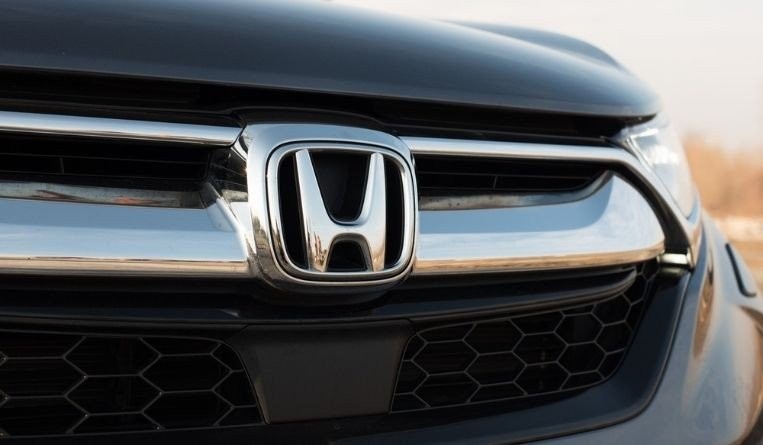Foreign brands often question whether they need trademark registrations in China when engaging Chinese factories for OEM activities. “Previously, a pure OEM arrangement with proper authorization from the owner of a trademark registration in the exporting country would generally not be considered infringement of identical or similar Chinese trademarks. However, in the recent judgment handed down in Honda Motor Company v. Chongqing Hengsheng Xintai Trading (the HONDAKIT case), the Supreme People’s Court seems to have changed its position on whether branded products, produced through OEM in China but intended to be exported elsewhere for sale, constitutes trademark infringement,” says Barbie Ho, a senior associate at Deacons in Hong Kong. “In light of this case, brands may need to revisit the importance of securing trademark registrations in China.”
Should we expect a huge increase of trademark applications from foreign brands in China, then?
It is too early to tell. “We do consider that the HONDAKIT case would have a certain impact on foreign companies which were previously more comfortable to conduct OEM activities in China without trademark registrations as they were under the impression that the infringement risks were low,” says Catherine Zheng, a partner at Deacons. “Upon issuance of the HONDAKIT case, we have seen a few of these clients coming back for advice as they are now considering securing registrations in China.”
Court’s position after the Pretul and Dong Feng cases
There were two significant relevant cases before the HONDAKIT one.
In November 2015, the first guidance ruling was handed down by the SPC in the Pretul case, which held that branded goods produced through OEM generally did not infringe upon Chinese trademarks, as long as the goods were not for sale in China and were all exported, says Liyan Guo, an associate at Norman Waterhouse in Adelaide.
The Pretulreasoning was a consequence of the structure of the Chinese trademark law, which is not the same as the Agreement on Trade-Related Aspects of Intellectual Property Rights or the European Union legislation. “In TRIPS, as in the EU, the use of a trademark is not specifically defined; legislation defines only what signs may be registered as a trademark and what rights are conferred by the registration,” says Hui Huang, senior partner at Wanhuida Intellectual Property in Beijing. “In China’s trademark law, Article 48 defines the use of a trademark and uses the words ‘for the purpose of indicating the sources of goods.’”
The Pretulreasoning, which was based on these words, failed to ask one simple question: If the trademark affixed to the goods does not fulfill the function of indicating the source of the goods (because of the exportation), what other function does it fulfill? “Is it generic use? Is it fair use? Obviously, the answer to such questions would have been that the mark was indeed affixed on the goods for the purpose of indicating the source of the goods, regardless of the place where the goods were to be sold,” says Paul Ranjard, of counsel at Wanhuida.
In December 2017, another landmark ruling made by the SPC in the Dong Feng case further reiterated its position but added a “reasonable duty of care” test, holding that trademark infringement could not be established unless a) the OEM accepted the engagement without reasonable duty of care; and b) the OEM activities had caused substantial damage to the trademark rights of the plaintiff, says Guo.
Whether OEM use of a trademark on goods made solely for export, constitutes an act of infringement, has always been a controversial issue in China and the divergent approaches taken by the judicial and administrative authorities has caused concern for trademark owners, Ho says. “Following the judgments in the Dong Feng and Pretul cases, we observed a trend as to how Chinese courts approach OEM infringement cases; generally, they will consider a number of factors before concluding whether there is infringement:
- Whether the OEM was authorized to manufacture the products based on a valid, prior trademark right in the exporting country;
- Whether the OEM has exercised a reasonable duty of care in verifying the IP of the foreign purchaser;
- Whether the products manufactured are entirely for export and not circulated in China;
- The OEM will be subject to higher duty of care subject to specific facts, such as whether a well-known trademark is involved, and whether there are obvious signs of bad faith.”
These factors allow Chinese courts to take a pragmatic, fact-specific, approach to achieve substantial justice in each case but, on the whole, a trademark applied to goods designated exclusively for export was not regarded as a badge of origin to Chinese consumers and did not cause confusion, she says. “In the HONDAKITcase, the SPC has again emphasized the case-by-case approach taken by the earlier courts, but a significant development is the adoption of a much broader consideration of what constitutes ‘likelihood of confusion’ when determining infringement,” Guo said.
The HONDAKIT case
In this case, motorcycle parts bearing the “HONDAKIT” mark, manufactured in China, were exported to Myanmar with the authorization of the owner of the “HONDAKIT” mark in Myanmar. Honda Motor lodged infringement proceedings against the OEM in China. The first instance court ruled in the plaintiff’s favour to find infringement, which was overturned by the high court, given that the products had not circulated in China. The plaintiff then appealed to the SPC which affirmed that there was infringement. “The SPC took into consideration the constantly changing business environment and held that the application of the law needs to be flexible to take account of these changes. In the circumstances, OEM activities should not be exempted from infringement,” says Tracy Li, a senior associate at Deacons. “The SPC found that the application of a mark, in the context of OEM for export, should be regarded as use of a trademark, as long as it serves to identify the source of the products. It is still necessary to show a likelihood of confusion amongst the ‘relevant public’ and the SPC expanded this concept by holding that this includes any persons who may access the OEM goods in the course of production, as well as post-production.”
Furthermore, the SPC rejected the argument that there could be no likelihood of confusion if the goods were not intended for sale in China. “In light of the rapid development in e-commerce and the internet, and increasingly frequent overseas travel, the SPC felt that Chinese manufactured products, although intended for export and sale in foreign markets, might well be exposed to China and domestic consumers, giving rise to the possibility of confusion,” Li says. “Actual confusion isn’t required. Therefore, the OEM’s act of affixing a trademark on OEM products, which is similar to a China registered mark, is an act of infringement, even if the products are intended solely for export.”
It is important to note that the prominent display of “HONDA” in the “HONDAKIT” mark is an indication of bad faith which undoubtedly affected the court’s decision in finding infringement and this case confirms the SPC’s pragmatic approach in an ever-evolving market, she says. “This should be welcomed by genuine trademark owners with registrations in China, who have been seeing OEM used as a loophole for infringers to export counterfeit products elsewhere. However, the decision could be a double-edged sword as it also means that trademark owners without their own Chinese registrations could be at risk of infringing prior registered marks. It remains to be seen how the Chinese courts will handle such cases.”
Ideally, the preferred option would be to remove the registered marks by filing invalidations and/or non-use cancellations, then to secure one’s own registrations in China, Zheng says. “This is because non-practicing entities shouldn’t be rewarded.”
“However, if it isn’t practical and/or feasible, purchasing the registered marks should be the foreign brand owners last resort taking into account of their business plan,” she says. “Alternatively, we sometimes would ask clients to devise new trademarks for China.”
Customs
According to Zheng, Customs currently has no new directives in response to the HONDAKIT case. “As long as the OEM companies can adduce the necessary documents to prove that the goods are for export and the proper authorization has been obtained, Customs won’t detain the goods, although the practice of local Customs authorities may vary.”
Nothing suggests that there will be an across-the-board practice among Customs, she says. “With all the developments regarding OEM activities over the years, no specific guidelines have been issued among the Customs. While there have been some draft practice directives circulated for comments over the years, none of which have been put into force. Before issuance of a new practice directive, chances are that slightly different practices shall remain with Customs at different borders.”
From time to time, the firm receives enquiries from clients that suspicious counterfeit shipments are detained by Customs, she adds. “This type of cases is usually first found at Customs, but they don’t keep records and a significant number of cases go unreported. At the court level, there are usually three to four reported cases each year.”
Non-use cancellation
No discussion on OEM activities would be complete without looking into non-use cancellation proceedings, Zheng says. “OEM use has been more consistently recognized as valid trademark use in non-use cancellation proceedings after the Pretul case. We don’t expect any change in approach in the context of defending non-use cancellation cases based on OEM use since the legislative purpose of non-use cancellation is to encourage genuine use and reduce the number of idle trademarks. If the broad approach taken by the SPC, in finding that OEM products could still reach Chinese consumers via non-traditional channels is consistently applied, this would be in line with the position taken in non-use cancellation cases.”
In fact, the 2019 amendments to China’s trademark law mainly address bad faith trademark registrations and handle large volume of trademarks filed by squatters/hoarders, she says. “We see that the China National Intellectual Property Administration is proactively rejecting applications that are suspicious to be bad faith and/or the hoarders have no intention to use.”
The CNIPA is now more inclined to rule in favour of genuine foreign owners where there is evidence indicating squatting or hoarding behaviour, she adds. “We trust that the CNIPA will continue with such stringent approach.”
Outlook
All in all, the SPC’s judgment is good news to Chinese trademark owners. “China is no longer a hotbed for overseas pirated trademark owners. Rights owners of Chinese trademarks can enforce their rights against infringing products in processing in China rather than waiting for the OEM products to be sold in other countries where the rights owners have registered trademarks, too,” says Jinwen Han, a partner at Anjie Law Firm in Beijing. “Manufacturers in China will be more careful when accepting international orders, and as a result it will also reduce the occurrence of infringing OEM products.”
Richard Kimber, principal at Norman Waterhouse in Adelaide, agrees. “Clearly this change in approach has significant consequences for Australian businesses that source branded components, ingredients or even packaging materials as well as products from China. China isn’t formally bound by case precedent, but decisions of the SPC are treated as ‘judicial guidance’ and its decisions are often followed by lower courts.”
Last but not least, bad faith registrations seem to be attracted by the first-to-file system, so will China ever adopt first-to-use?
“There has been no discussion towards such a direction among authorities,” Zheng says. “We would imagine such a change would be a huge one which requires complete changes towards all trademark practices in China and we don’t foresee this would happen in the near future.”















